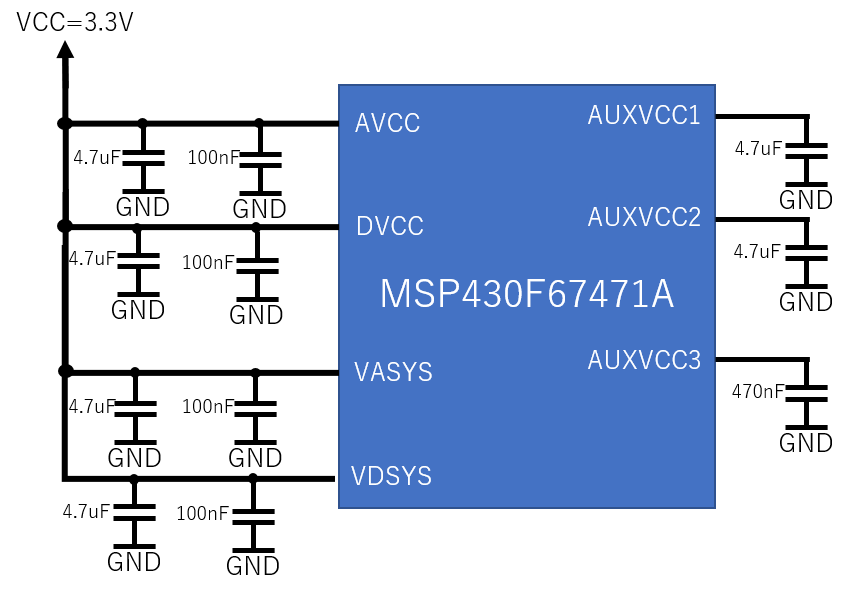Other Parts Discussed in Thread: TIDM-AUX-MODULE
Hello.
I have a question.
1.Looking at the document 153 page below, the VASYS and VDSYS pins seem to be connected to ground via capacitors of 4.7 uF and 100 nF.
However currently, on my board, the VASYS and VDSYS pins are pulled down with a 4.7 μA capacitor and are connected to the same supply source of DVCC and AVCC.
In case of my board connection, what kind of problem are you thinking?
2.The AUXVCC1, AUXVCC2, and AUXVCC3 pins are not used, but they are connected to the same supply source of DVCC and AVCC.
I am planning to disable AUX VCC by software, but are there concerns such as current consumption going up?
Regards,




